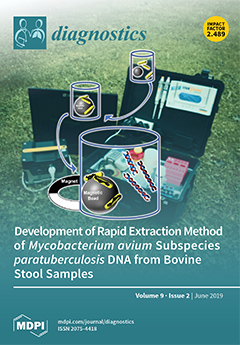Background: Hepcidin encoded by
HAMP is vital to regulating proliferation, metastasis, and migration. Hepcidin is secreted specifically by the liver. This study sought to examine the functional role of hepcidin in hepatocellular carcinoma (HCC). Methods: Data in the Cancer Genome Atlas database was
[...] Read more.
Background: Hepcidin encoded by
HAMP is vital to regulating proliferation, metastasis, and migration. Hepcidin is secreted specifically by the liver. This study sought to examine the functional role of hepcidin in hepatocellular carcinoma (HCC). Methods: Data in the Cancer Genome Atlas database was used to analyze
HAMP expression as it relates to HCC prognosis. We then used the 5-ethynyl-20-deoxyuridine (EdU) incorporation assay, transwell assay, and flow cytometric analysis, respectively, to assess proliferation, migration, and the cell cycle. Gene set enrichment analysis (GSEA) was used to find pathways affected by
HAMP. Results:
HAMP expression was lower in hepatocellular carcinoma samples compared with adjacent normal tissue controls. Low
HAMP expression was linked with a higher rate of metastasis and poor disease-free status. Downregulation of
HAMP induced SMMC-7721 and HepG-2 cell proliferation and promoted their migration.
HAMP could affect the cell cycle pathway and Western blotting, confirming that reduced
HAMP levels activated cyclin-dependent kinase-1/stat 3 pathway. Conclusion: Our findings indicate that
HAMP functions as a tumor suppressor gene. The role of
HAMP in cellular proliferation and metastasis is related to cell cycle checkpoints.
HAMP could be considered as a diagnostic biomarker and targeted therapy in HCC.
Full article






